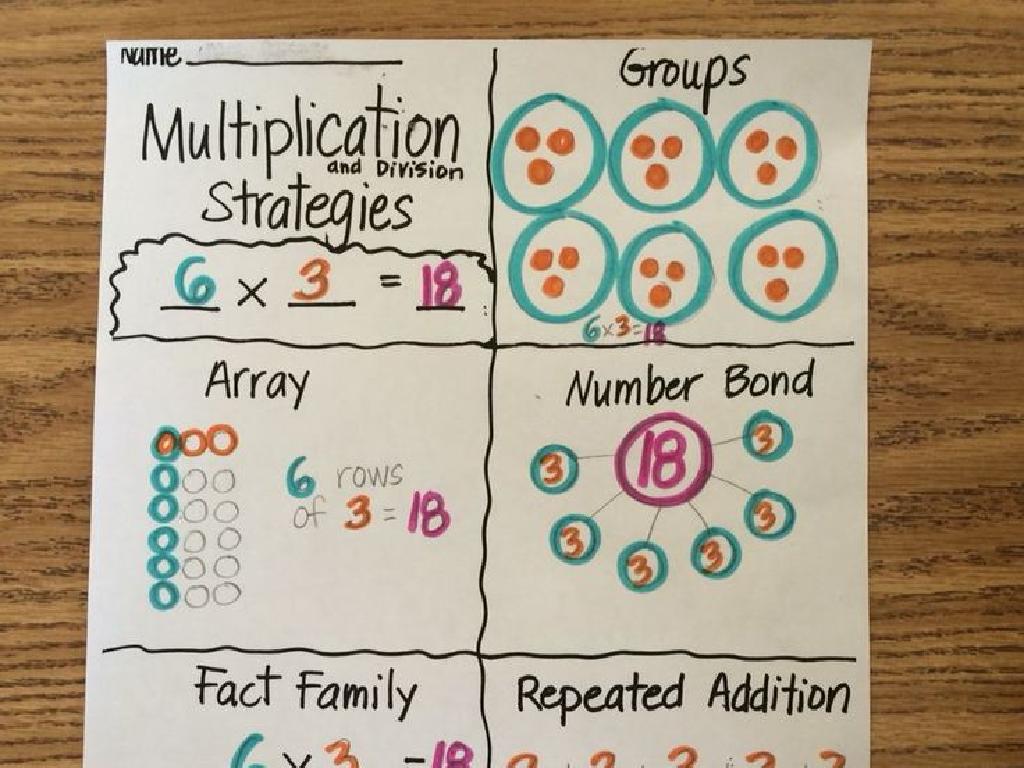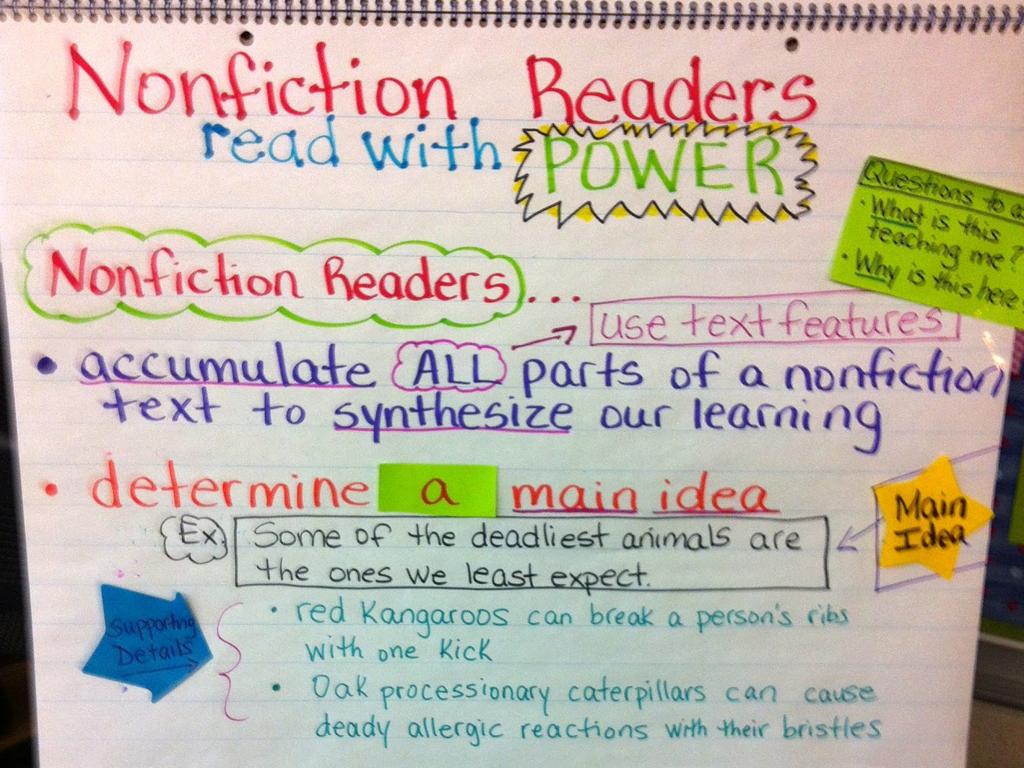Classify Rational Numbers Using A Diagram
Subject: Math
Grade: Sixth grade
Topic: Rational Numbers
Please LOG IN to download the presentation. Access is available to registered users only.
View More Content
Welcome to Rational Numbers!
– Explore types of numbers
– Define rational numbers
– Numbers that can be expressed as a fraction a/b, where a and b are integers and b is not zero.
– Daily life examples
– Money: $0.75, Fractions in recipes: 1/2 cup sugar, Measuring length: 3/4 inch
– Classifying with diagrams
– Use Venn diagrams to classify and visualize how rational numbers include integers, whole numbers, and natural numbers.
|
This slide introduces students to the concept of rational numbers, which are an important part of the number system. Begin by discussing the different types of numbers they already know, such as whole numbers and integers. Then, define rational numbers as those that can be written as a fraction with an integer numerator and a non-zero integer denominator. Provide relatable examples like money, cooking measurements, and lengths to show rational numbers in daily life. Finally, explain how diagrams, such as Venn diagrams, can help classify and understand the relationships between different sets of numbers, including rational numbers. Encourage students to think of other examples of rational numbers they encounter every day.
Classifying Rational Numbers
– Rational numbers as fractions
– A rational number can be expressed as a fraction a/b, where a and b are integers and b is not zero.
– Understanding numerator & denominator
– The top number, or numerator, represents parts we have, while the bottom number, or denominator, represents total parts.
– Whole numbers as rational numbers
– Every whole number can be expressed as a fraction with a denominator of 1, making it a rational number.
– Visualizing with a diagram
|
This slide introduces the concept of rational numbers to sixth-grade students. Begin by explaining that rational numbers include all numbers that can be written as a fraction, where both the numerator (top number) and the denominator (bottom number) are whole numbers, and the denominator is not zero. Emphasize that every whole number is a rational number because it can be expressed as a fraction with a denominator of 1 (e.g., 3 can be written as 3/1). Use a diagram to visually represent the concept, such as a number line or a circle divided into equal parts, to help students better understand and classify rational numbers. Encourage students to think of their own examples of rational numbers and how they can be represented as fractions.
Properties of Rational Numbers
– Expressed as a ratio
– e.g., 1/2, 3/4, where 2 and 4 are integers
– Denominator is non-zero
– The bottom number in a fraction cannot be zero
– Can be positive or negative
– Numbers above or below zero on a number line
– Visualizing with diagrams
– Use number lines or circles to classify them
|
This slide aims to explain the fundamental properties of rational numbers to sixth-grade students. Rational numbers are those that can be written as a fraction or ratio of two integers, where the denominator (the bottom number) is not zero. It’s crucial to emphasize that zero cannot be a denominator because division by zero is undefined. Rational numbers include both positive and negative numbers, which can be represented on a number line. Diagrams such as number lines or circles can be used to classify rational numbers effectively. Encourage students to think of examples of rational numbers and how they can be represented visually. This will help them understand the concept more deeply and prepare them for working with these numbers in various mathematical contexts.
Classifying Rational Numbers with Venn Diagrams
– Use Venn Diagram for classification
– A Venn Diagram helps visualize different number sets and how they overlap.
– Place integers in the diagram
– Integers are a subset of rational numbers and fit within the larger rational numbers circle.
– Identify rational numbers visually
– Points on the diagram represent rational numbers like 1/2, 3, or -4.
– Understand diagram intersections
– Intersections show numbers that are part of multiple sets, like whole numbers that are also integers.
|
This slide introduces students to the concept of classifying rational numbers using a Venn Diagram. Start by explaining what a Venn Diagram is and how it can be used to show relationships between different sets of numbers. Integers, which are whole numbers that can be positive, negative, or zero, are a part of rational numbers, which also include fractions and decimals that can be expressed as a ratio of integers. Use the diagram to visually place integers and other examples of rational numbers, helping students to see the overlap and understand that all integers are rational, but not all rational numbers are integers. Encourage students to think of their own examples of rational numbers to place in the diagram.
Comparing and Ordering Rational Numbers
– Steps to compare rational numbers
– Use inequality signs to compare two rational numbers.
– Ordering on a number line
– Place numbers on the line to see their order visually.
– Practice with example problems
– Solve problems to reinforce comparison skills.
|
This slide introduces students to the concepts of comparing and ordering rational numbers. Start by explaining how to compare two rational numbers using inequality signs (>, <, =). Emphasize that rational numbers can be positive or negative and can be represented as fractions, decimals, or whole numbers. Next, demonstrate how to order a set of rational numbers on a number line, which helps students visualize the relative size of the numbers. Finally, provide practice problems for students to apply what they've learned. Encourage students to think about where numbers would be placed relative to each other on a number line and to use comparison to solve real-world problems.
Rational Numbers in Real Life
– Money as rational numbers
– Money is divided into dollars and cents, like $5.75
– Measurements use rational numbers
– Length, weight, and volume often measured in fractions or decimals
– Rational numbers in statistics
– Statistics use fractions to represent data, like 1/4 of people
– Understanding rational numbers
|
This slide aims to show students how rational numbers are applicable in everyday life. Money is a perfect example, as it is often represented in decimals, such as $5.75, which is a rational number. Measurements, whether it’s in cooking or building, often involve fractions and decimals, which are also rational numbers. In statistics, data is frequently represented in terms of fractions or percentages, which are based on rational numbers. Encourage students to think of other examples where they encounter rational numbers daily. This will help them understand the concept of rational numbers and how to classify them using diagrams.
Class Activity: Classifying Rational Numbers
– Create a Venn Diagram together
– Classify numbers with your group
– Work with peers to place numbers in the correct part of the Venn Diagram
– Discuss your classification choices
– Explain why you placed numbers in those sections
– Present your diagram to the class
|
This class activity is designed to encourage collaborative learning and to deepen students’ understanding of rational numbers through visual representation. Provide students with a large Venn Diagram template and a set of numbers to classify. Groups will discuss and decide where each number belongs on the diagram, whether it’s whole numbers, integers, or fractions and decimals. Encourage each group to explain their reasoning during the discussion phase. After the activity, each group will share their Venn Diagram with the class and explain their thought process. This will not only reinforce the concept of rational numbers but also develop their communication and reasoning skills. Possible variations of the activity could include using different sets of numbers for each group or challenging students to include negative numbers and zero.





